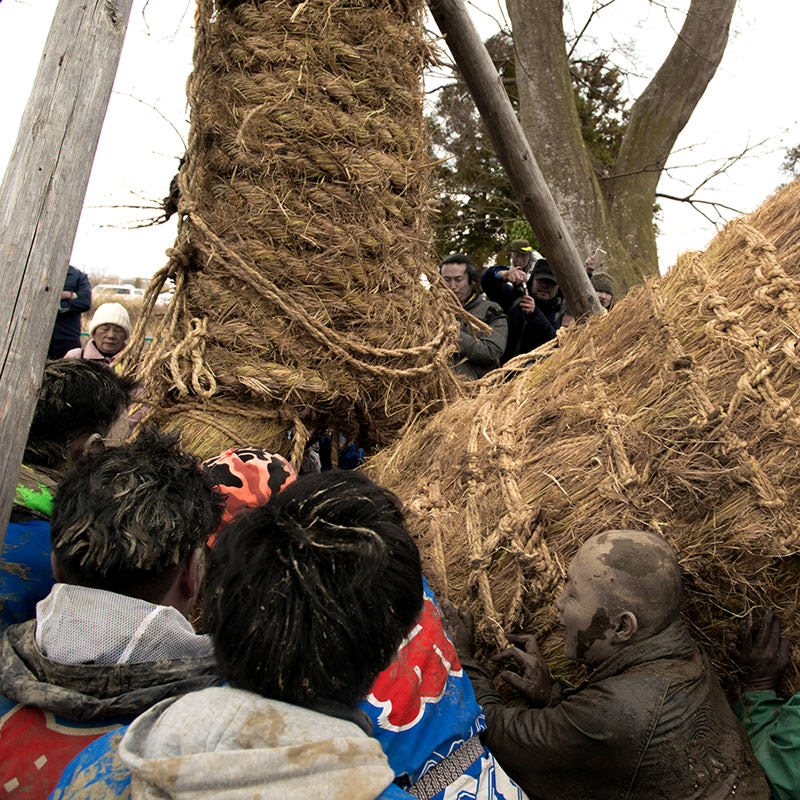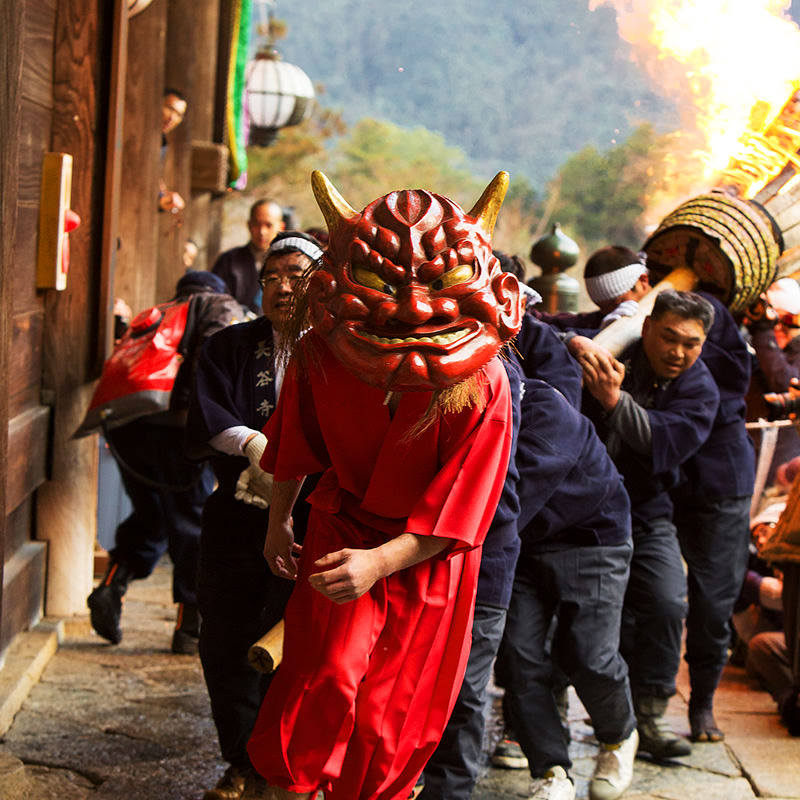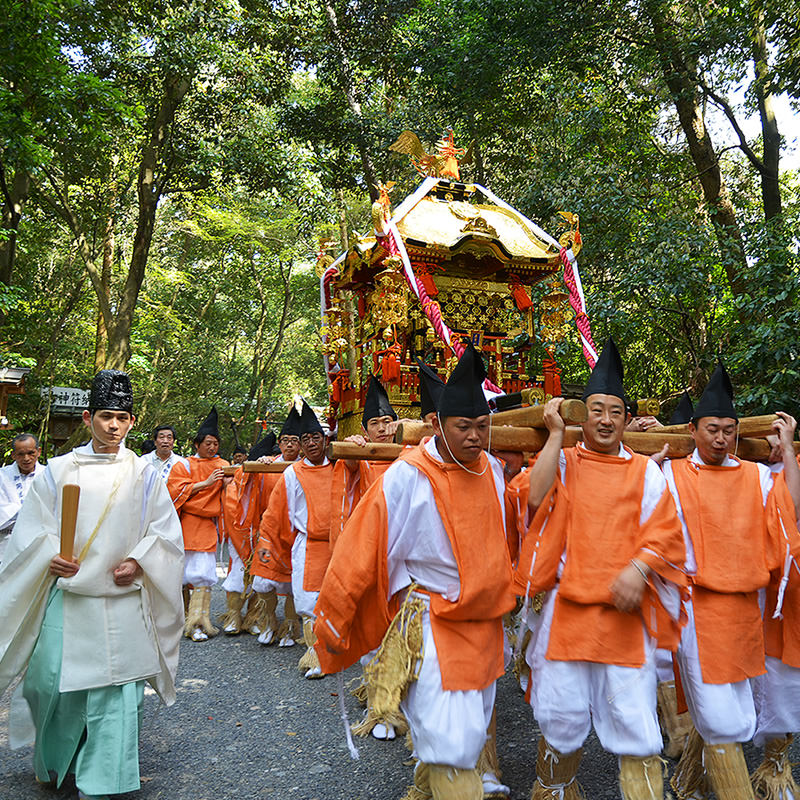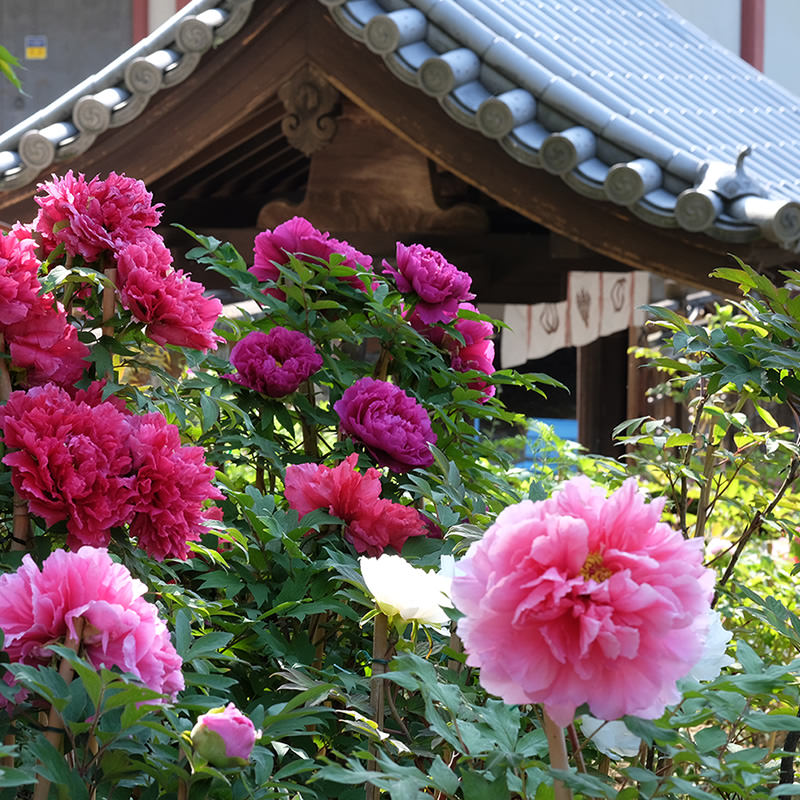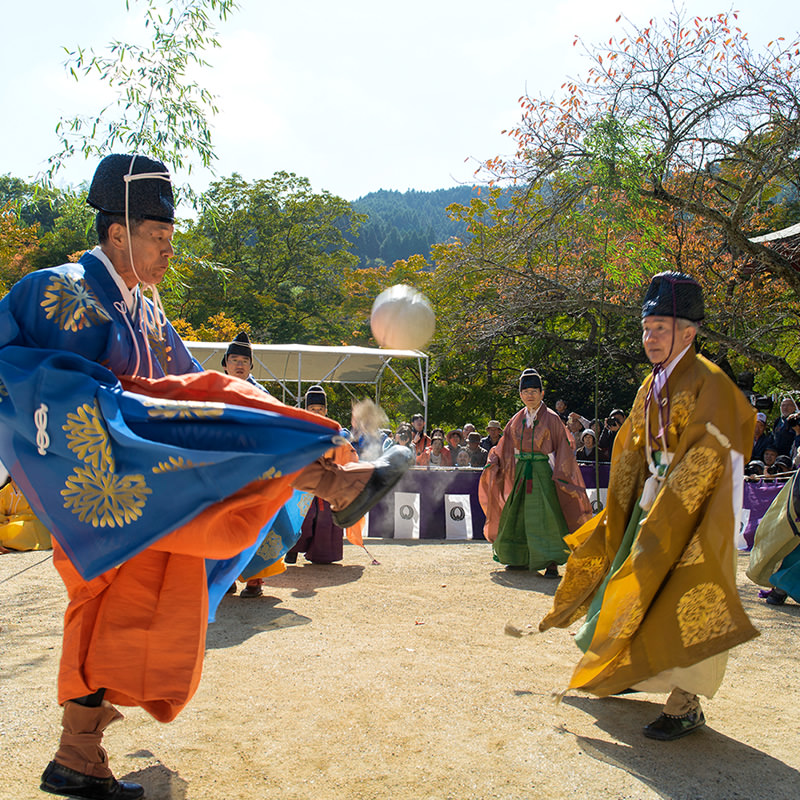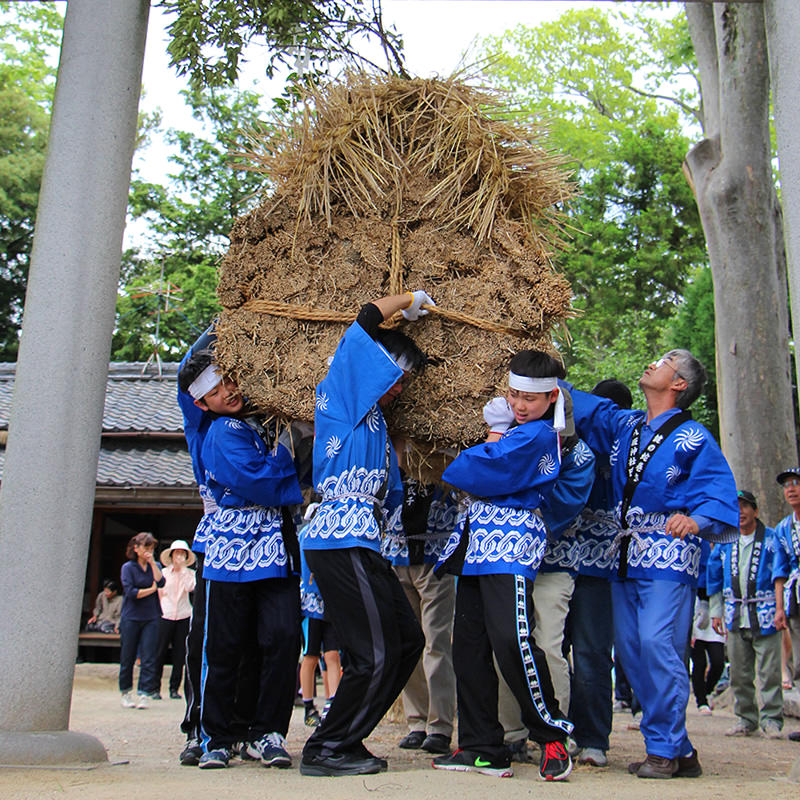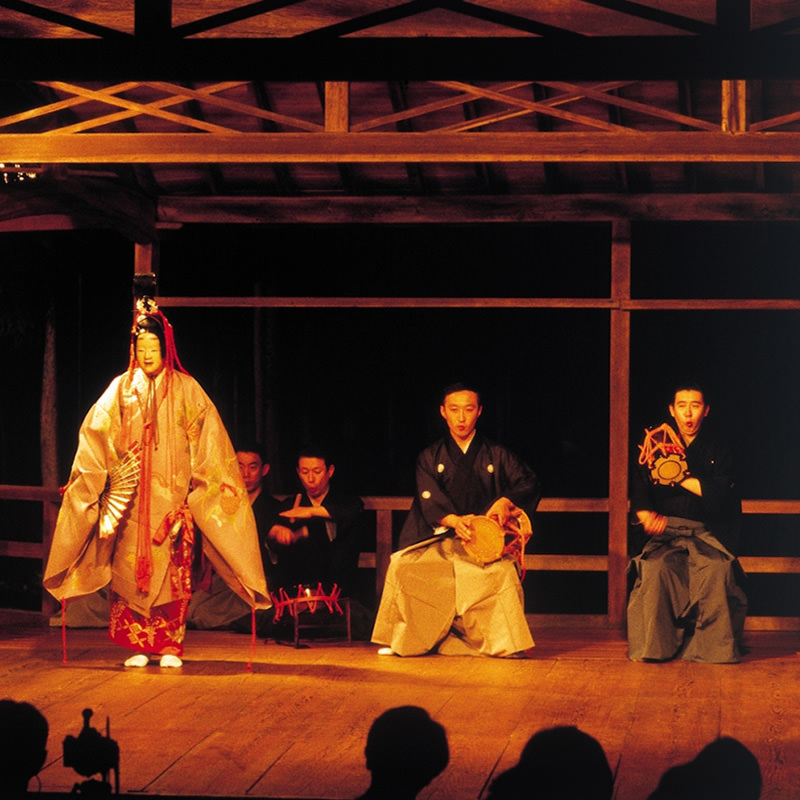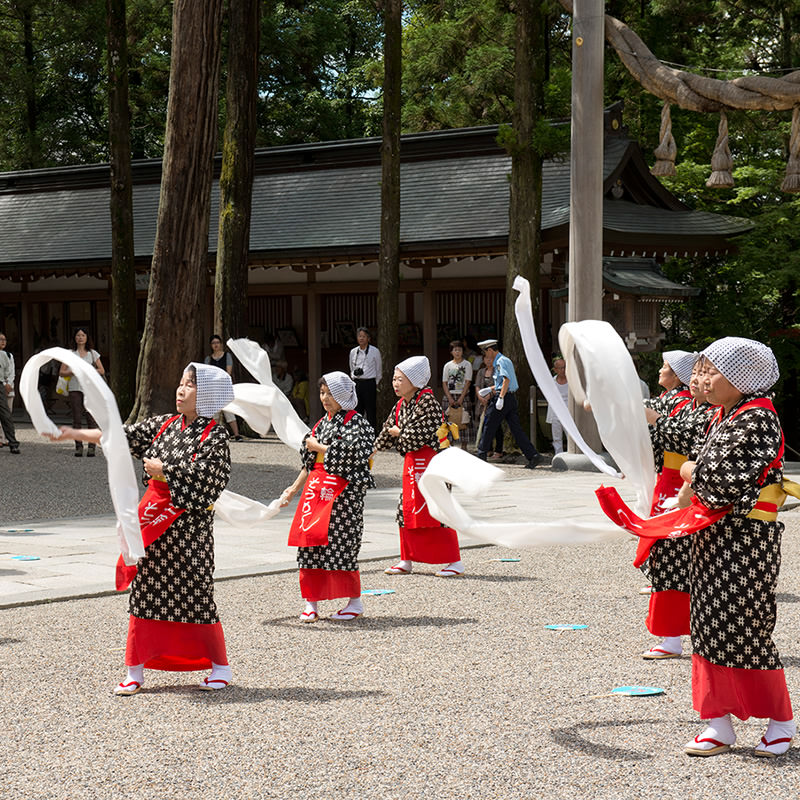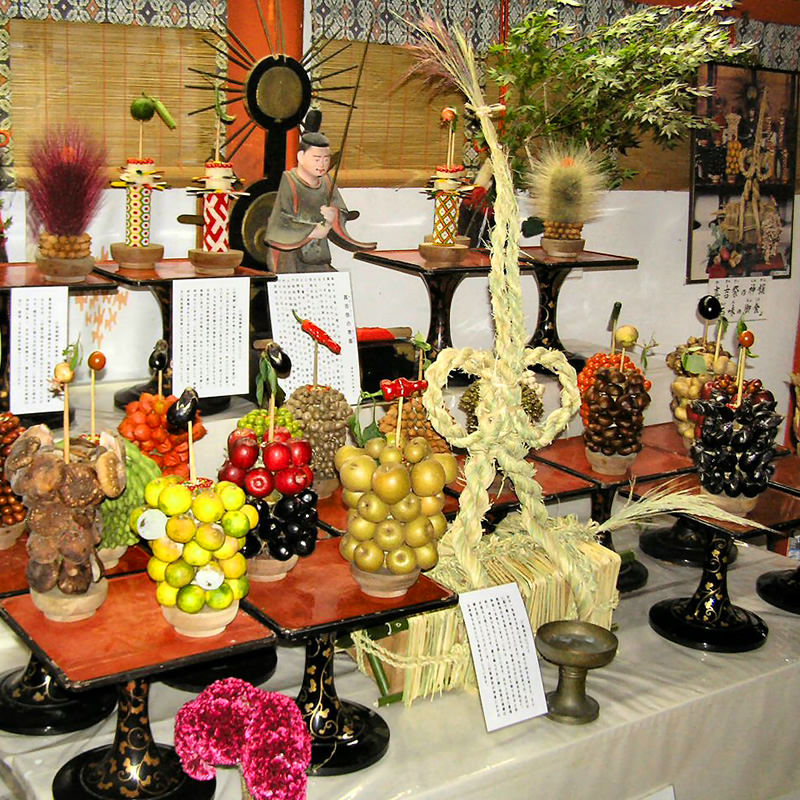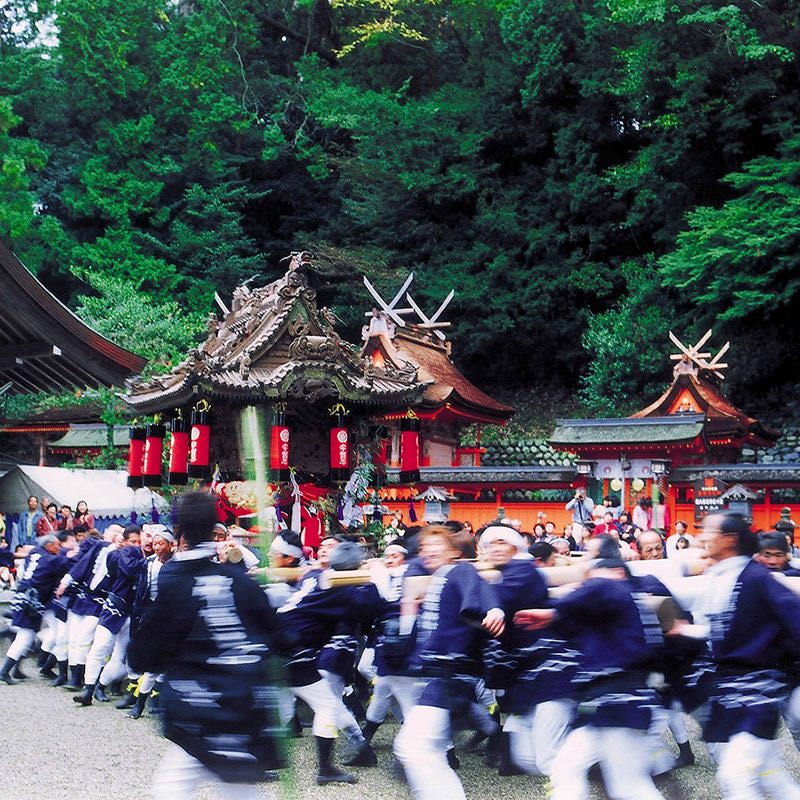January 1
Nyodo-Sai / Omiwa Jinja Shrine
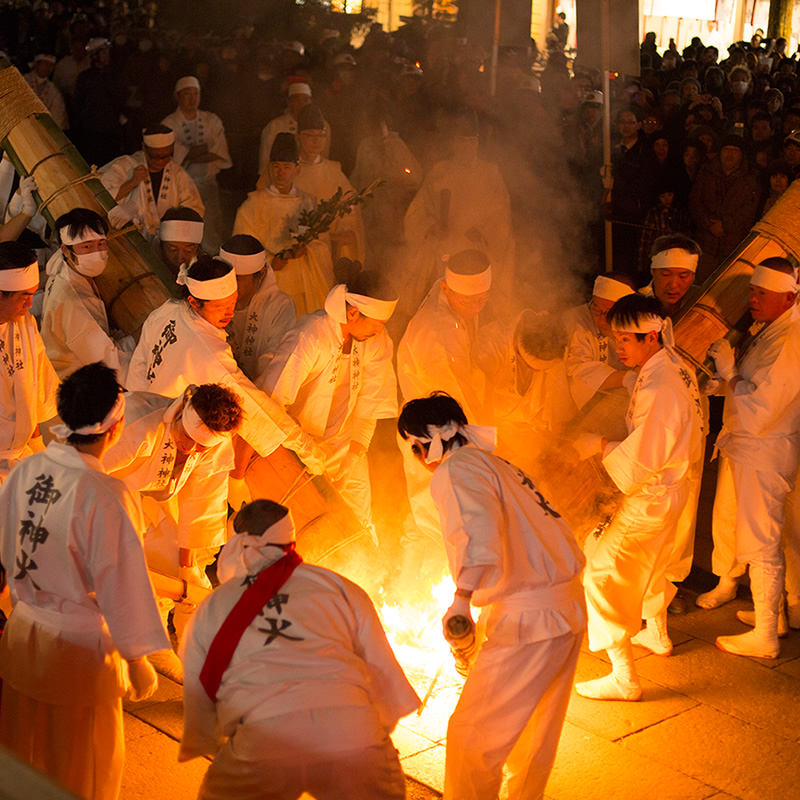
This festival offers prayers for peace in the nation and a bountiful harvest. A flame set on the taboo lands of the inner hall of worship that Mount Miwa constitutes is transferred to torches about three meters in length. The torches are then taken around and used to set fires at the 19 auxiliary and secondary shrines at the foot of the mountain. It’s a stirring and splendid sight. These fires are called kami-no-hi (“flames of the deities”), and there is a custom in the area of using these for fires on household altars or to cook zoni, a rice cake soup traditionally eaten on New Year’s Day.

